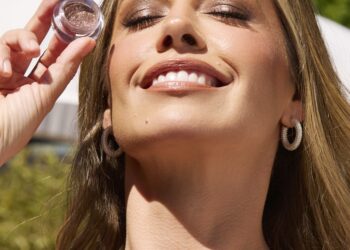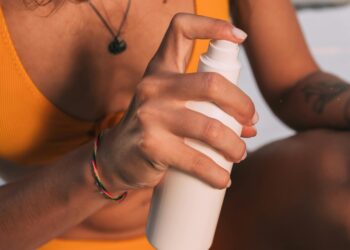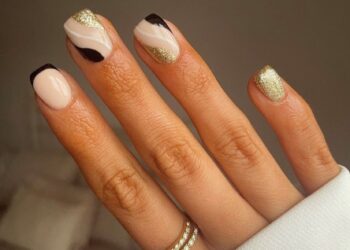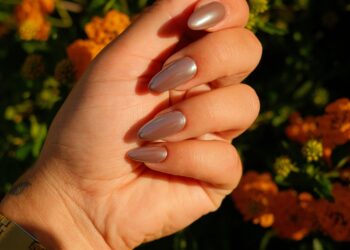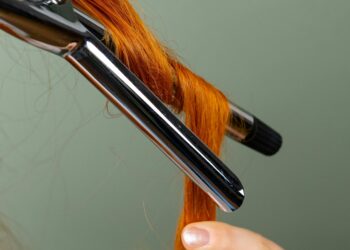Every wondered about the location that inspired your perfume? Editor Klara Heron visits the Chanel fields in the south of France to discover how the brand’s iconic fragrances are created
More and more, we’re becoming conscious of what goes into our products and where that comes from. We know where or our coffee beans and vegetables have been grown, and we take careful note of the ingredients on the back of our beauty essentials. But have you ever really thought about how fragrance is made and where the beautiful scents we love come from? I must admit it’s not something I think about when I pick up my perfume, so when the opportunity came up to visit the Chanel fields in France, I was intrigued.
I visited in late September, when the jasmine and tuberose fields were being harvested. The fields are in Grasse, a beautiful region in the French Riviera north of Cannes. Once a by-product of the leather-making industry, when jasmine flowers were grown to scent leather goods, the fields are now used predominantly for the perfume industry.
Ingredients
In the 1920s, the jasmine grown in Grasse was used in the now iconic scent Chanel N°5, and the fashion house has worked closely with the local growers to ensure the same variety is grown today that would have been used back then. Jasmine is a scent that many of us will be familiar with, but the jasmine from Grasse is an entirely different to that of the exotic scent we know – it’s much sweeter with notes of tea thanks to its unique soil composition and location.

Chanel N°5 Eau De Parfum Limited Edition (€150, 100ml) Brown Thomas
The other main ingredient used in N°5 is the May rose, which is also grown here and blooms for three to four weeks at most in May, as well as geranium, iris and tuberose, which is one of the main notes in the Gabrielle Chanel Eau de Parfum.

During harvest, the flowers are plucked by hand each morning and the petals go directly to the on-site factory to be turned into precious extracts which are used in the fragrances. For a fashion house to have ownership over its raw materials is extremely rare within the fragrance industry, and it’s something Olivier Polge, the Perfumer-Creator at Chanel, is extremely passionate about preserving: “We are very lucky at Chanel to create a fragrance from the flower to the bottle. It’s unusual in the fragrance world, I’m not aware of any brand that owns its own extractions in this way.

“The fields, the factory and my laboratory are all Chanel and very closely connected. Imagine a chef who didn’t know where his ingredients came from? You would not be in the best restaurant,” he smiles.
This remarkable process is made all the more unique given the fact that Olivier’s father, Jacques Polge, was the fragrance creator at Chanel for 36 years before him. Jacques created Coco Mademoiselle, Chance, Allure and many more during his time and drove the development of the Chanel fields in the 80s.
Heritage
This lineage is something that makes sense when you delve into all that Chanel does. Gabrielle, for example, launched last year after five years in the making, and is inspired by the house’s founder and eternal muse, Gabrielle Coco Chanel. Every fragrance, beauty launch and fashion collection threads back to her.
“Even though we have a strong history and character we are never trying to be nostalgic. I find inspiration in what [Coco Chanel] did. All the fragrances, even N°5 in itself, holds a lot of the character of her. With the words you use to describe N°5 you can describe all our fragrances – floral, opulence, richness, complexity. Chanel is a fashion house before anything else, and perfume contributes to that identity,” says Olivier.

As the fragrance creator, Olivier is hugely involved with the development of the fields and the family who oversee them. Joseph Mul has been working in the Chanel fields since 1968, he’s the fifth generation of his family to do so, and he and his son-in-law Fabrice Bianchi work closely with Olivier. Preserving this relationship is a large part of what Olivier does, and he is passionate about nurturing it.
Creation
He also spends a large part of his time in the lab, developing scents: “My favourite part of what I do is the beginning of each creation. It starts with an idea in my mind and then you must think about how to develop that and decide everything around it. A perfume is like the 12 music notes – you can create so much with the same notes.

Gabrielle Chanel Eau de Parfum Spray (€97, 50ml) Brown Thomas
“I like to say that you have to take something true to Chanel and at the same time create something new. In my mind we have quite a large diversity of fragrance but within that there is something often floral, either in a big way like in N°5, or in a more subtle way. For me the white florals are very important. Gabrielle is floral but tuberose gives it a creamy scent.”
Gabrielle has been developed into a collection of products including a body cream, shower gel and deodorant, and Olivier is very involved with this process, too: “I’m really in charge of everything that smells, and it’s important that the fragrance works well on the toiletries because we have to adapt the formula for each of them and we’re trying to translate the feeling to each product.”
As I’ve learned, this hands-on approach is very much at the heart of Chanel’s fragrances. It’s an intricate, evolving and fascinating journey, from field to bottle, and one that ensures that each fragrance from the house is totally unique. As Olivier says, “if a perfume is not authentic it loses its soul”.
Read more:
Back to basics: 6 simple ways to look after your skin
Inform | Inspire | Indulge


